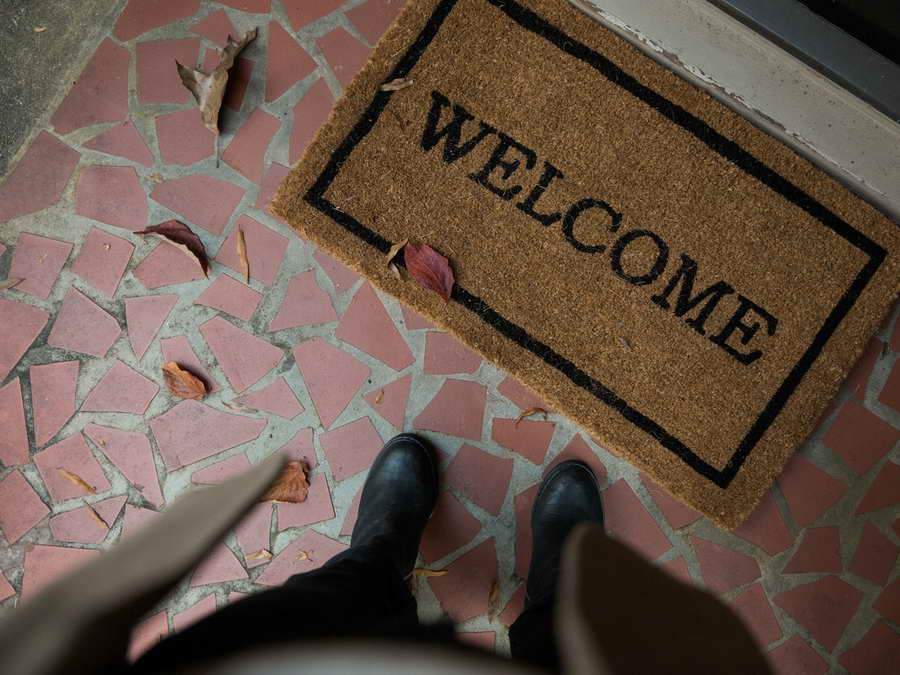Chatham-Kent learned something about Municipal Council this past March. The lesson was: “If you happen to be from the correct special interest group, your voice counts. If not, tough luck.” How else are we to interpret some recent decisions?
Two important, hot-button issues have come before our council members for resolution in the past month. They were faced with decision-making around homelessness in the community and also how to move forward on a new woodlot bylaw. In both cases, Council decided to ignore the faceless general public, while catering to the wishes of a special few.
Council and Homelessness
Facing the challenge of housing the homeless in Chatham-Kent, the administration was left with few choices. Their agreement with Travelodge was expiring, and in the preceding months had not been able to find a suitable alternative. Eventually, they decided to try a partnership with Hope Haven, a non-profit organization dedicated to providing outreach and shelter for the homeless. This plan would come before Council with little advanced notice to the community.
Hope Haven would be able to provide up to 30 beds each night, which is less than what was being offered at the Travelodge. However, Hope Haven staff have experience working within the homeless community and there was a belief that the partnership with the Municipality would help create opportunities to help get people off the streets permanently. It was a good idea with a glaring “problem”—they are located “somewhere.” In this case, that “somewhere” happens to be downtown Chatham, just a few blocks from King Street.
As always seems to happen with homeless shelters, the “Not in My Backyard” crowd woke up. The Chatham Daily News reported on March 4 that Andrew Theil, President of Abstract Marketing had started a petition which quickly garnered around 150 signatures. This initiative was primarily led by business leaders with operations downtown, claiming that a homeless shelter is bad for business as it would lead to safety issues for employees and likely result in increased crime and vandalism.
The homeless are people who deserve to be somewhere, the petition claimed while making it clear that “somewhere” was anywhere else. Conceptually, a solution was suggested by Pete Tsimbiris in that same article saying that a “less dense area, on a bus route, access to nature, with all the amenities required within the building, is the best solution and one that will lower costs of both public and private sectors.”
Assuming that what homeless people really need is more space between buildings, access to the outdoors and a bus stop shows just how out of touch people can be. There are often, but not always, a whole host of barriers in the mix of issues that typically gets wrapped into “homelessness.”
Yes, severe mental illness is uncomfortable to see and be around, but it is the reality that some people live with. Drug use, poverty, and poor mental health do make a person more likely to be homeless. Being “homeless,” however, does not make you a criminal nor does it make you more prone to criminal activities like vandalism or petty theft.
The Chatham-Kent Council should know this while, certainly, staff who have worked on these issues in the administration for years should be able to inform them if they don’t. Yet, this petition was enough to cause Council to pause the emergency Hope Haven plan and ask again for alternatives. Days later, one materialized as a group of local businessmen bought up a vacant school property on the end of Murray St. and offered it as a solution.
On the surface, this does look like a good option. The building has the space to provide a greater number of beds, access to food and facilities, and maybe even programming to help get people off the streets permanently. The private partnership that made the purchase and offer deserves some props for using private money to fund a public solution.
However, in agreeing to this course of action, Council and administration did that thing where they don’t really tell anybody until the decision has been made. Once again, there was no organized community consultation, nor was the new plan announced until it was essentially a done deal, just like the Hope Haven plan. The difference here is that this neighbourhood doesn’t have the means to purchase property and ship the “problem” away from them, nor is there any time left on the ticking clock.
Administration and Council have known since the deal was signed with the Travelodge that a May 2022 deadline was a real possibility. It is hard to believe that in the intervening time, no solutions were found, and this whole thing ended up having to be solved in a crisis situation.
What is even more concerning is that the most thought-out solution, working with Hope Haven, could be scrapped so quickly due to pressure from a few local businesses while implementing a seemingly knee-jerk solution in a neighbourhood with no public consultation. Kids, seniors, and families were all deemed to not have enough clout to be worthy of consideration. In their panic, caught between business owners and a deadline, Council and Administration decided the easiest way forward was to ignore the “faceless” community and just do what they wanted.
It is not the first time this has happened, either. In 2020, when the Administration wished to move their homeless services from the Bradley Centre to Meritt Avenue, there was no community consultation planned, either. Polly Smith, Director of Employment and Social Servies said at that time, “There’s not a requirement for a neighbourhood consultation, but I do consult with groups and I would be happy to do that.” Two years ago, she was willing to talk to groups after the decision had been made. It seems that on the local government end, nothing has changed.
Not that consulting people first would make any difference when it comes to decisions, either.
Council and Woodlots
In the past couple of years, there has been a renewed emphasis on getting Council to pass a woodlot-related by-law to restrict the clear-cutting of woodlots. Chatham-Kent is one of the very few municipalities with no meaningful laws on the books about how woodland resources should be managed.
They tackled this issue in 2014 by creating a toothless policy document that both Administration and Council have largely ignored. In 2014 the goal was to increase tree coverage in Chatham-Kent to 10%. The reality is that tree cover, largely through the clear-cutting, has actually shrunk in this time period.
So, our current council was forced to deal with the issue again. They decided it would be best to work with a third party to design the community consultation process. This hired firm would then document, process and present the information which could then be used by Council and Administration. At the same time, the Municipality would be conducting research and studies. This was the process that was promised to Chatham-Kent.
Comparisons were made to other municipalities, and an inventory of tree and forest coverage was created. Maps were drawn, a detailed online questionnaire was created and opportunities for the public to comment were given. In the end, our taxes were used to pay for a report that was to help guide Council in their decision making.
That report showed that Chatham-Kent was an outlier by not having tree management bylaws on the books. It highlighted that past policies were not effective. Without any enforcement mechanisms, landowners could and would do whatever they felt was in their best interests at the moment. The final report also showed that the “anti-bylaw” element had made an effort to skew the community engagement results in their favour. Finally, it made clear that the majority of respondents, by a wide margin, were in favour of some sort of bylaw limiting clear-cutting and establishing rules around woodlot management.
All Council had to do now was create those bylaws. They formed a “Committee of the Whole” called the Natural Heritage Committee. This group is composed of every council member, but is not actually “Council.” Here they were going to study the issue and provide recommendations to themselves, as Council, on how to finally bring closure to this issue.
Except, no, they didn’t.
The “anti-bylaw” crowd claimed that the Natural Heritage Committee is not asking for public consultation. This assertion conveniently ignores the fact that extensive consultation has already taken place. It is also an obvious attempt to negate the fact that public sentiment was clearly not in their favour. As justification, they claimed that the report’s conclusions could not be trusted because the questions were biased against them. They argued that even more tax money should be spent by hiring a third-party mediator who would be neutral and would find some sort of middle ground.
The Natural Heritage Committee had before them the following information:
- Policies from 2014 that were largely in line with the finding of the most recent study
- A completed report that Council had already accepted and had used as the basis for creating the Natural Heritage Committee
- Evidence of overwhelming support in the community for something to be done to put limitations on clear-cutting
- A fairly clear process, supported by data, that would lead to decision making
- A small special interest group who wanted a do-over
Incredibly, enough of the Council members sitting on the Natural Heritage Committee decided to throw away the completed report and money that was spent right along with the documented will of the people.
Why? Because the Kent Federation of Agriculture, which represents about 1,800 members from the agricultural sector suddenly takes more precedence than the majority of average citizens who disagree with them. Now Council is going to spend more taxpayer money to hire a third-party mediator to redo a bunch of the work that was already done, accepted by the Council and paid for.
Narrow special interests, once again, for the win.

Is this Council’s attitude toward the average citizen?
At least Council is out in the open about the voices they prefer to hear. They aren’t even being subtle about it now. Go ahead and write your deputations. Send your emails. Get involved and bring your voice to the discussion. Just remember that the secret to your success doesn’t lie so much in the number of people who want the same thing, in studies, or even logic. It’s really about whether or not you are part of the “right” special interest group.





And the clowns gleefully spun in circles; dancing their time away while stroking each others egos – grinning with intent and looking around into the eyes of the other inept.
The goal was never to make change, but to ride the wave. To do what has always been done- bide your time, don’t make waves and maximize the return unto you and yours.
Status quo minions regurgitate the stall until there is no longer anything to fight for. And than ask, what was all the fuss about?
Concession, concession concessions of forest lost and comprises made. The middle ground is better defined as slope – so one sided and in a downward trend.